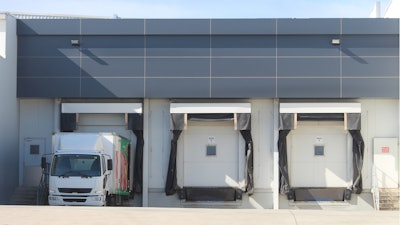
Cargo theft is a year-round threat to the transportation and logistics industry. More than $96 million in cargo was stolen across the United States and Canada through the third quarter of 2023, according to data from CargoNet, which also reports that:
· Incidents of theft increased year-over-year for each quarter: 64% for Q1, 57% for Q2 and 59% for Q3.
· “Strategic” cargo thefts, in which actors use fraud to obtain and misdirect freight, increased 430% year-over-year.
· Theft of a loaded conveyance, such as a full trailer, increased 4% year-over-year.
· Food and beverages were the top targeted commodity, followed by electronics and household goods.
· Truck stops, parking lots and warehouses and distribution centers were the top targeted locations for thefts.
The data for Q4 2023 has yet to be reported, but it’s reasonable to guess that the thieves didn’t take time off over the holiday season, which historically has shown an uptick in activity from bad actors.
There are plenty of commonsense precautions that carriers should consider for preventing theft, such as using high-security trailer locks, not leaving trailers unattended and adding surveillance cameras to facilities and yards.
In addition to measures like these, fleet telematics technology has emerged as a powerful tool in combating cargo theft. Telematics, leveraging a blend of GPS, telecommunications, and connected sensors offers an array of functionalities that empower motor carriers to enhance security measures, monitor assets in real-time and mitigate the risks associated with cargo theft.
Real-time asset tracking and monitoring
A key benefit of fleet telematics technology is its ability to provide real-time tracking and monitoring of vehicles, trailers and other assets. GPS-enabled devices deliver continuous location updates, enabling carriers to easily track their fleet's movements, and with cloud-based management platforms, fleets can be monitored anytime from anywhere via mobile devices. This level of visibility allows for immediate detection of unauthorized stops or deviations from planned routes, which could be signs of potential theft incidents.
In addition to these security benefits, trailer tracking helps carriers increase efficiency (no more pencil-and-paper yard checks); boosts trailer uptime (know exactly where your trailers are for better utilization); and reduces driver frustration (no more wasting time searching for a trailer when it’s not where it should be).
Geofencing and automated alerts
Geofencing technology is another valuable feature associated with fleet telematics. Carriers can establish virtual boundaries (called geofences) around specified areas. If a vehicle or trailer equipped with telematics crosses one of these predefined boundaries or leaves designated zones, fleet managers will receive automated alerts, enabling rapid response to potential operational or security issues.
Geofencing technology serves as a valuable tool for trucking companies overall, offering benefits such as improved fleet visibility, route optimization, enhanced security, efficient asset management, better customer service, regulatory compliance, driver monitoring and data-driven insights, all of which greatly contribute to improved operations and increased competitiveness within the industry.
Connected sensors
Many telematics solutions are compatible with a host of sensors that trigger alerts upon unauthorized access or tampering with cargo containers or trailers. These sensors provide immediate notifications to carriers, enabling prompt intervention and preventing theft attempts.
Door sensors, for instance, can alert you to when a trailer door is opened or closed. Combined with location data and geofencing, you’ll know if someone is getting into a trailer when they shouldn’t.
While trailer door sensors can aid in thwarting cargo theft (or provide data for the investigation of theft incidents), there are many other compatible sensors that can increase efficiency and safety during the busy holiday season and throughout the year. Tire sensors, for example, provide near real-time data on trailer tire pressure and temperature, helping carriers avoid blowouts, costly roadside repairs and underinflation violations, not to mention wasting a driver’s time by having them hook up to a trailer with a flat. Other sensors provide data on brake health, cargo status, lights, reefer temp and more.
Driver behavior monitoring
Telematics technology monitors driver behavior, including sudden stops, reckless driving, deviations from usual driving patterns or lengthy idle times. Unusual behavior can be flagged for further investigation, potentially indicating a security threat. In general, driver behavior data provides carriers with the information they need to implement more effective driver training and coaching programs to improve safety and take measures to eliminate driver behaviors that waste fuel or subject vehicles to excessive wear and tear.
Fleet telematics technology serves as a powerful weapon for motor carriers in the fight against cargo theft. Through tools like real-time tracking, geofencing, connected sensors, driver behavior monitoring and others, telematics technology not only helps deter theft but also aids in evidence collection, investigation and recovery of stollen goods and assets. As the transportation industry evolves, investing in robust telematics solutions becomes increasingly important for carriers to safeguard their assets, minimize losses, and maintain operational efficiency amidst the ever-present threat of cargo theft.


















